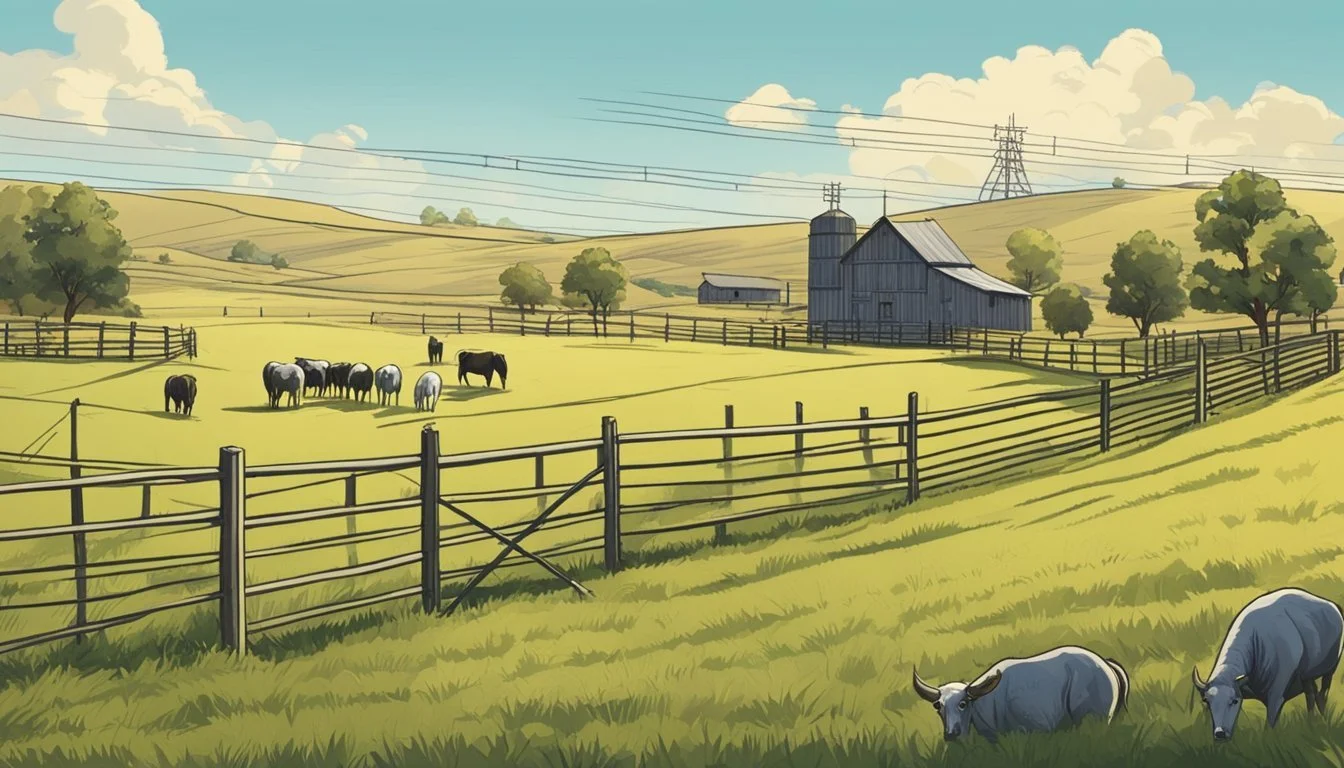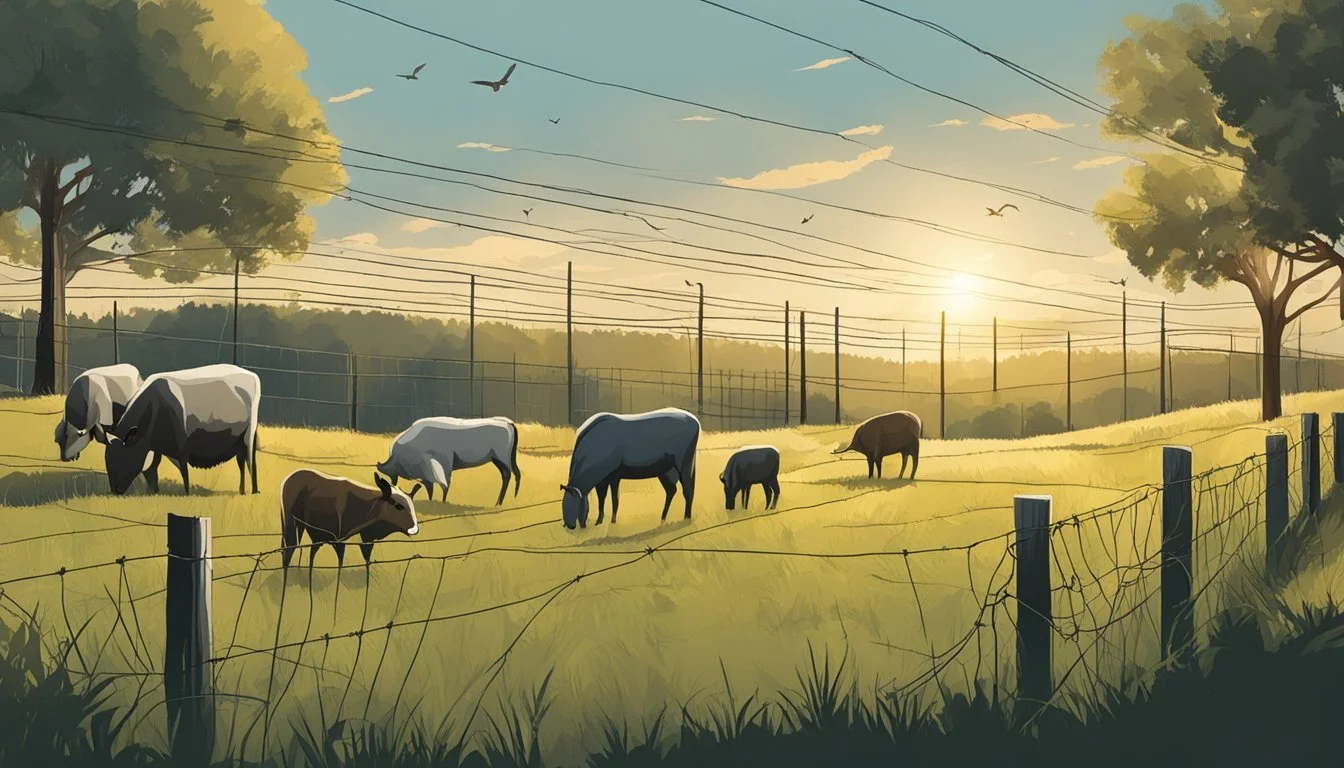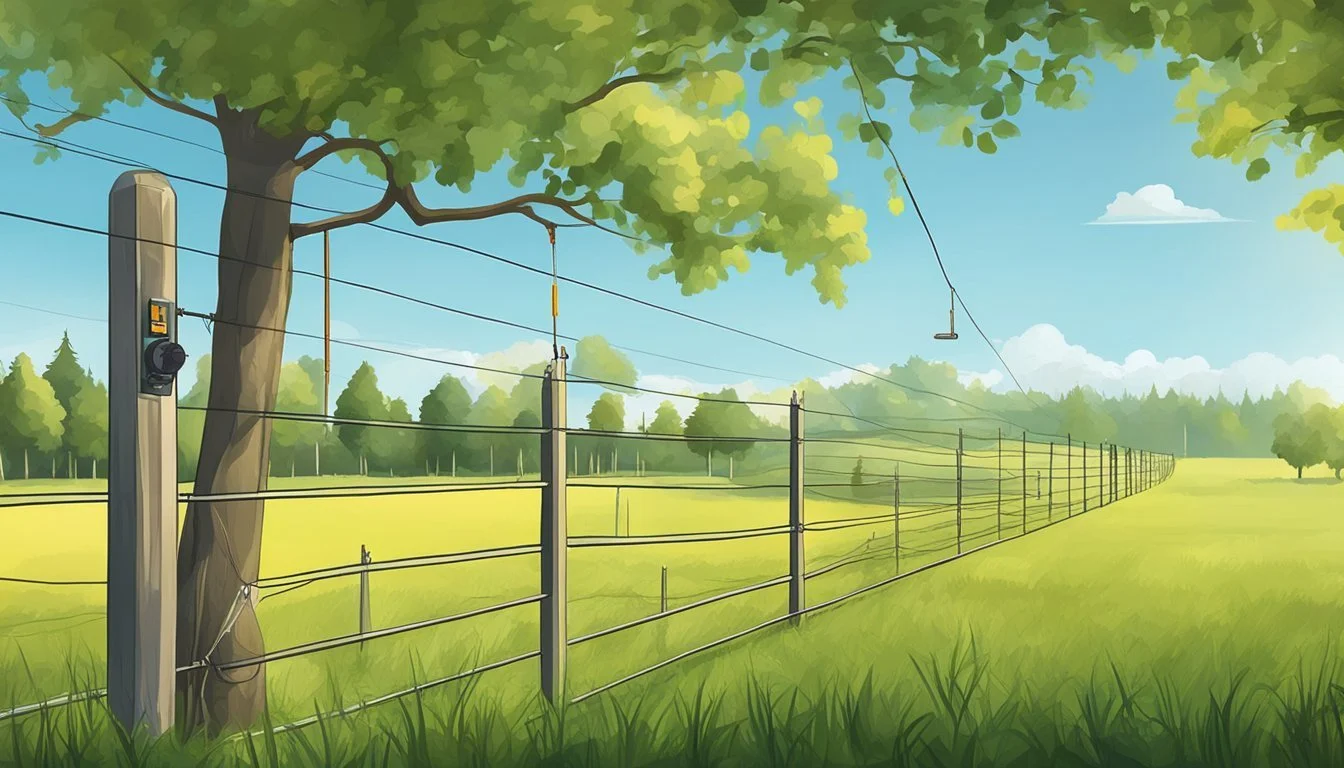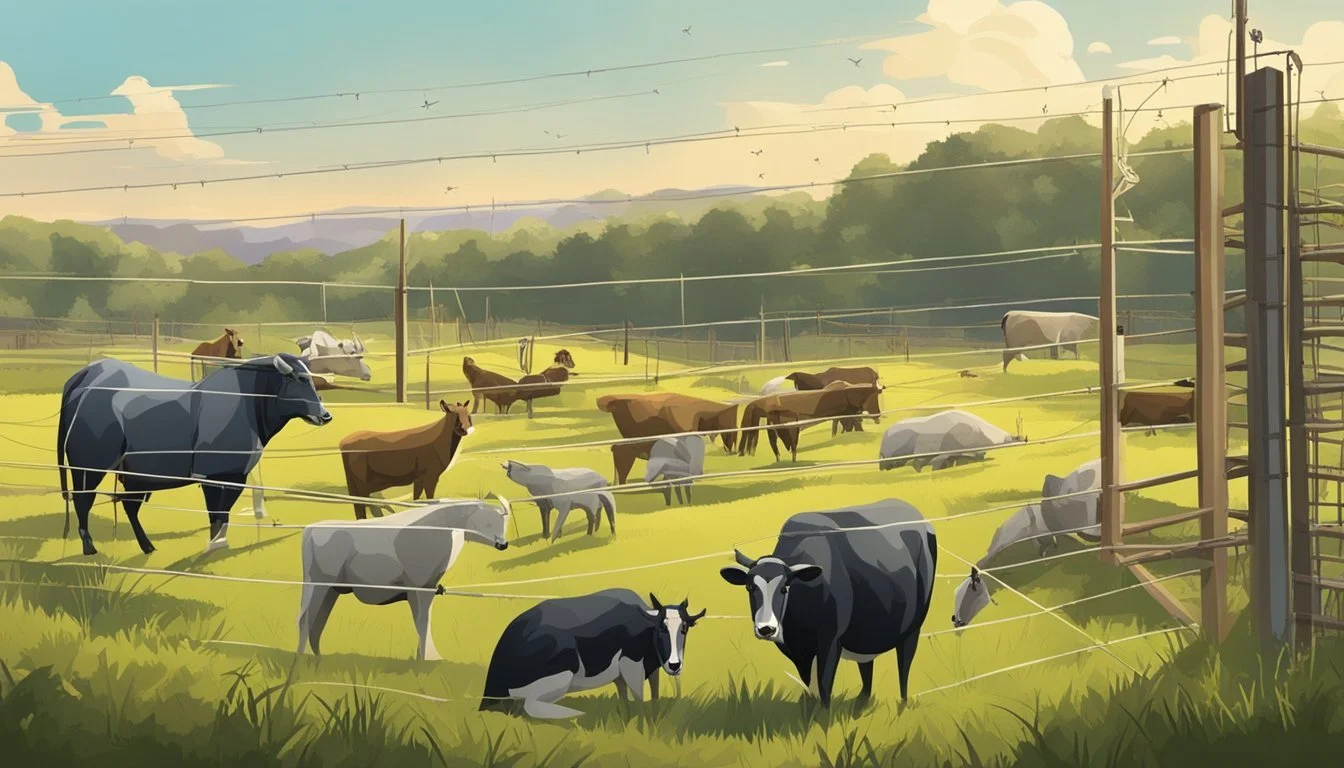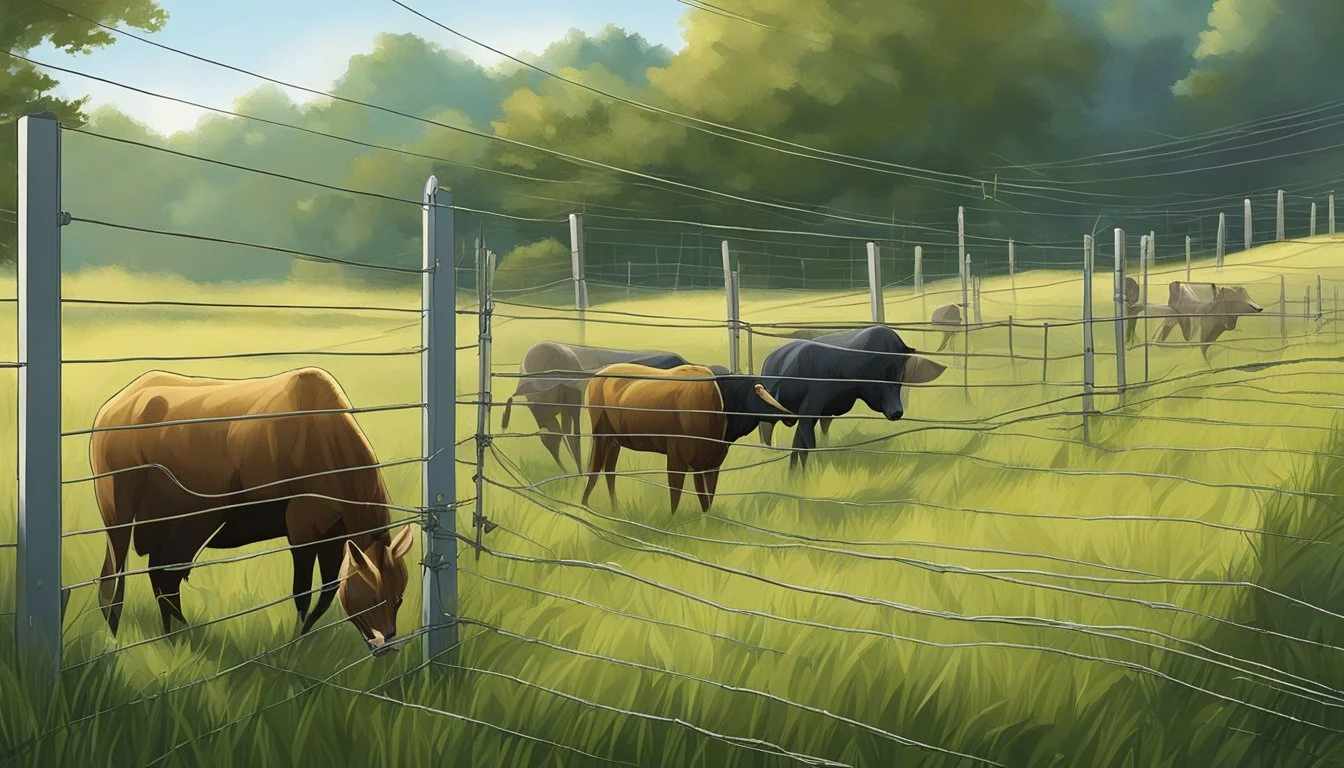Ultimate Guide to Electric Fence Supplies
Ensuring Secure Livestock and Predator Deterrence on Your Homestead
Electric fence supplies are the cornerstone of effective livestock containment and predator control for homesteaders and farmers alike. Electric fencing offers a flexible and efficient method to manage livestock, ensuring that animals stay within designated boundaries without the need for heavy physical barriers that can be expensive and labor-intensive to install and maintain. Moreover, a properly installed electric fence acts as a psychological barrier for both livestock and potential predators, using a short, sharp, but safe shock to teach animals to avoid contact.
Choosing the right electric fence charger, also known as an energizer, is crucial for the effectiveness of an electric fencing system. Energizers come in various types, including AC-powered, battery-operated, and solar-powered units, each designed to meet specific requirements based on enclosure size and the availability of power sources. The decision involves considering factors like power output, which is measured in joules, to ensure adequate charge delivery across the fence line, and ultimately, reliable livestock containment and predator deterrence.
Aside from the energizer, the other components of electric fencing such as wire, posts, insulators, ground rods, and connectors also play important roles in the overall functionality of the fence. Each component must be selected with the animals' specific needs and the environmental conditions in mind to maintain a consistent and safe barrier that can withstand daily use and external elements. Through informed selection and proper installation of electric fence supplies, homesteaders can achieve efficient management of livestock while reducing the likelihood of predator-related losses.
Understanding Electric Fences
Electric fences are a reliable method for containment and protection, utilizing a psychological barrier of a shock to deter livestock and predators. They provide safety for animals within and act as a defense against external threats.
Principles of Electric Fencing
Electric fencing operates on the simple principle of completing an electrical circuit when an animal or predator touches the fence. A pulse of electric current is delivered when the circuit is closed. The key components include:
Energizer: The device that generates short, high-voltage pulses.
Conductors: Usually wire, tape, or rope that carries the charge.
Insulators: Materials that prevent the electric current from going to the ground, except when the circuit is closed by an animal.
Grounding rods: Copper rods sunk into the ground that direct the current back to the energizer to complete the circuit.
Safety Tip: Always ensure that the voltage of an electric fence is kept at a safe level for livestock and humans, avoiding unsafe exposure to electric currents.
Benefits of Using Electric Fences for Livestock and Predator Control
Electric fences offer a range of benefits for both containment of livestock and control of predators:
Containment: They effectively contain livestock within a defined area by providing a psychological barrier reinforced by the experience of a short, sharp shock.
Predator Deterrence: The fence serves as a potent deterrent to predators, discouraging attempts to reach the livestock.
Adaptability: Electric fences can be adapted to various terrains and settings, offering flexibility in livestock management.
Cost-Effectiveness: When compared to traditional fencing options, electric fences tend to be less expensive and easier to install and maintain.
By understanding the principles and recognizing the advantages of electric fences, one can effectively employ this method for efficient livestock management and predator control on their homestead.
Types of Electric Fencing
Electric fencing is an effective solution for livestock containment and predator control. It is essential to understand the types of electric fencing available in order to select the best option for a particular scenario.
Permanent vs Temporary Electric Fences
Permanent electric fences are typically constructed with high-tensile wire designed to withstand environmental stress and the pressure from contained animals over many years. Permanent fences often use thicker, galvanized steel wire or aluminum wire to conduct electricity effectively over long distances.
High-tensile wire: Metal strands twisted together to form a durable wire capable of maintaining high tension.
Temporary electric fences are more flexible and are often used for rotational grazing or movable barriers. They utilize polywire or polytape, which are easier to install and relocate.
Polywire: A lightweight, portable option made from synthetic fibers woven with metal threads.
Polytape: Broad, ribbon-like strands that are highly visible and easy to set up for short-term use.
Materials Used in Electric Fencing
The primary materials used in electric fencing include:
Metal Wires: Usually made from galvanized steel or aluminum, providing a durable and conductive pathway for the electrical current.
Polywire and Polytape: These options blend metal filaments with plastic materials for greater visibility and portability.
Electric Netting: This is a mesh of interwoven conductive wires, often used for poultry or to keep out small predators.
Woven wire fences are less common in electric fence applications due to their lower conductivity and more complex installation process compared to simple strands of wire. However, when incorporated into an electric fencing setup, they can prove effective at deterring larger predators.
It is important to consider the specific needs of the homestead when choosing materials for electric fencing. The right choice depends on whether the fence is intended as a permanent boundary or a temporary measure, the types of livestock being contained, and the potential threats from predators.
Components of an Electric Fence System
A well-designed electric fence system includes a reliable electric fence charger, sturdy fence posts paired with insulators, and an effective grounding system setup. Each component plays a specific role in delivering a safe yet effective deterrence for livestock containment and predator control.
Electric Fence Chargers
The heart of an electric fence system is the electric fence charger or energizer. It transforms a power source, such as a battery, mains electricity, or solar panels, into a high-voltage pulse. This pulse is responsible for the shock that deters animals from breaching the perimeter. The type of charger selected should be appropriate for the type of animal being contained or deterred.
Power Source Options:
Battery-powered
Main electric supply
Solar-powered
Fence Posts and Insulators
Fence posts serve as the backbone of the electric fence, providing structural support for the wires or tapes that carry the electric current. The material of the posts can vary from wood to fiberglass to steel, depending on the installation requirements and the type of animal.
Insulators are crucial as they prevent the electric current from being grounded prematurely. They are attached to the fence posts and come in various designs suitable for different types of conductive materials like wire, rope, or tape.
Types of Posts:
Wood
Fiberglass
T-Post
Plastic
Insulator Options:
Screw-in insulators
Snap-on insulators
Corner insulators
Grounding System Setup
A grounding system is integral to the proper functioning of an electric fence. It typically includes three grounding rods driven into the ground at a minimum of 10 feet apart, connected with wire and clamps to the energizer. Proper grounding ensures that when an animal touches the fence, the circuit is completed, allowing the electrical current to pass through the animal and into the ground, delivering an effective shock.
Grounding Components:
Minimum of three grounding rods
Grounding clamps
Grounding wire
Each component within this setup is vital for a functional and effective electric fence that ensures the safety and containment of livestock while deterring predators efficiently.
Designing the Fence Layout
A well-designed fence layout is the backbone of an effective livestock containment and predator control system. The design dictates the strength and efficiency of the fencing system, ensuring that it meets the specific needs of the homestead's pastures and perimeter.
Determining Fence Location and Perimeter
The initial step in designing an electric fence involves outlining the proposed fence location and calculating the total perimeter. Homesteaders need to check survey maps and verify boundary lines to ensure their design remains within their property. For perimeters with heavy vegetation, additional planning may be required to clear unnecessary foliage that could compromise the fence's effectiveness. When plotting the fence line, gate placement is critical for accessibility and management of the livestock.
Survey Maps: Confirm boundaries.
Heavy Vegetation: Plan for removal.
Gate Placement: Essential for access.
Calculating the Number of Strands Required
The number of strands needed for a fencing system hinges on the type of livestock housed within and the potential predators it needs to guard against. A perimeter fence for cattle, for example, might require fewer strands compared to a system intended for smaller animals like goats or poultry, which are more susceptible to predators.
To calculate the strands required, consider:
Animal Size: Larger animals may need fewer, but stronger strands.
Predator Pressure: Higher predator presence increases strand count.
Intended Use: Breeding areas may demand more robust fencing.
Cattle: 1-2 Minimum Strands
Sheep: 4-6 Minimum Strands
Goats: 4-7 Minimum Strands
Poultry: Netting preferred
Solidifying the design of an electric fencing system by determining the exact location and the appropriate number of strands is essential for an efficient, secure, and effective fence.
Electric Fence Installation
Installing an electric fence is a cost-effective method of livestock containment and predator control. A correctly installed electric fence ensures security while being safe for both animals and humans.
Step-by-Step Installation Guide
Plan Your Fence Layout: Using a detailed map of your property, outline the area where the fence will be installed. This includes marking the position of each fence post and the path of the electrical wire.
Installing Fence Posts: Securely drive your fence posts into the ground, spaced appropriately (usually around 8 to 10 feet apart) to provide a firm foundation for the wire. The type of post (metal, plastic, or wooden) will depend on your specific needs and environmental factors.
Mounting the Insulators: Attach insulators to the posts, ensuring they are properly fitted to prevent electricity leakage. These can vary in design, depending on the post type and wire used.
Stringing the Wire: Feed the wire through the insulators, maintaining tension to avoid sagging. Wires should be spaced correctly to prevent animals from passing through without receiving a shock.
Installing the Energizer: Choose a suitable place for the energizer that is protected from weather. Connect the energizer to the fence wire and the grounding system, which should include at least three ground rods spaced at least ten feet apart.
Grounding System: Install at least three galvanized ground rods, 6 to 8 feet deep and 10 feet apart, connecting them with ground wire to the energizer to complete the circuit.
Testing the Fence: Use a fence voltage tester to ensure the correct voltage is running through the fence. Check the system regularly, especially after inclement weather.
Tools and Safety Equipment
Tools Required: The following tools are necessary for efficient installation:
Post driver or hammer for fence posts
Wire cutters and pliers for handling wire
Voltage tester to check the fence's power
Safety Equipment: Safety should not be overlooked. The following items are essential:
Insulating gloves to prevent electric shock
Safety glasses to protect the eyes
Ear protection if using loud equipment
Remember, all equipment should be used as per the manufacturer's instructions to ensure both a secure installation and the safety of the installer. Regular inspection and maintenance are crucial for long-term fence operation and livestock security.
Powering Your Electric Fence
To maintain effective livestock containment and predator control, one must carefully select a dependable power source for their electric fence. The chosen power source will ensure a consistent delivery of energy, measured in joules, necessary to discourage trespass by animals.
Choosing the Right Power Source
When setting up an electric fence, one needs a charger—also known as an energizer—that can deliver sufficient joules of energy. The charger converts electrical input into a high-voltage pulse that is fed through the fence wire at regular intervals. This pulse needs to be strong enough to be respected by the livestock and deter predators without causing harm. The power source for the charger can be either from the main power grid or a battery, and in some instances, it may be supplemented by solar panels to minimize energy consumption from non-renewable sources.
Battery-Powered Versus Solar-Powered Systems
Battery-powered systems are generally portable and can be advantageous if one needs to set up fencing in remote areas without access to the main power grid. These systems require a battery (or series of batteries) that must be regularly checked and recharged or replaced.
Advantages: Portability, effectiveness in remote locations
Disadvantages: Requires regular maintenance, including battery recharging or replacement
In contrast, solar-powered systems harness energy from the sun using solar panels, converting it to electricity to power the fence energizer. These systems are especially beneficial in sunny climates and reduce the need for battery replacements.
Advantages: Renewable energy source, minimal maintenance, cost-effective over time
Disadvantages: Initial higher cost, dependent on sufficient sunlight conditions
Both systems should be selected based on specific needs in relation to the fencing perimeter, the type of livestock, local climate, and available sunlight, to ensure efficient operation of the electric fence.
Maintaining Your Electric Fence
The longevity and efficiency of an electric fence largely depend on consistent maintenance and routine checks. Proper attention ensures the fence continues to confine livestock effectively and deter predators.
Regular Inspection and Testing
Regular inspections are crucial. Weekly checks should be implemented, with a focus on assessing high-quality materials such as galvanized or copper components for signs of wear or corrosion. A digital voltage tester is an essential tool for testing, and it should display a reading indicating that the voltage levels are within the expected range to deliver an effective shock.
Check the tension of the wires; they should be taut but not overstressed.
Inspect insulators for cracks or damage which could impact performance.
Test the fence with a voltage tester to confirm it's operating at the correct voltage.
Managing Vegetation and Maintaining Proper Voltage
Vegetation touching the electric fence can drain power and significantly reduce its effectiveness. Maintenance involves:
Regularly trimming grass and weeds under and near the fence line to prevent energy loss.
Monitoring voltage levels to ensure the shock delivered is sufficient to deter animals. A reading below the threshold indicates a need for immediate maintenance.
Maintain proper voltage: Make sure that your fence is not grounded by vegetation and that the voltage remains at a level powerful enough to be an effective barrier.
Weed conditions: Regular removal of vegetation is required to prevent shorts that can reduce voltage and compromise the functionality of the fence.
Livestock and Predator Behavior Modification
Electric fencing serves as a barrier and a psychological deterrent, shaping the behaviors of both livestock and predators for the safety and productivity of a homestead.
Training Livestock to Respect the Fence
Proper training of livestock is critical to ensure that animals respect the boundaries set by electric fences. Animals such as cattle, sheep, goats, and poultry should have initial exposure to the fence in a controlled environment. It's important they associate the fence with negative reinforcement without causing injury. This can be done by:
Introducing young animals to a short section of live fence, ensuring there is enough space for them to back away after feeling a pulse.
Using visual markers like flags or tape to help livestock identify the electrified wire.
Effectiveness in Deterring Predators
Electric fencing can significantly reduce predation from coyotes, wolves, bears, and other wildlife. The effectiveness of the fence in deterring predators depends on:
Height and design of the fence: A height of at least 42" is recommended to deter coyotes, with the addition of multiple strands for larger predators like wolves and bears.
Voltage level: A sufficient charge must be maintained to dissuade predators; regular maintenance checks are necessary to ensure voltage levels are adequate.
Incorporation of guardian animals: A guardian dog within the protected area can offer an additional layer of deterrence through sight and noise, adding to the fence's effectiveness.
These measures help preserve the ecosystem by managing predator populations responsibly while securing livestock.
Enhancing Fence Performance and Safety
Effective livestock containment and predator control rely on a well-functioning electric fence system that is not only powerful but also safe for both animals and humans. Key elements such as choosing a robust fence controller and strategizing for psychological deterrence can optimize both performance and safety.
Utilizing Warning Signs and Animal Psychology
Warning signs play a dual role in enhancing safety around your electric fencing. They alert humans to the presence of an electric barrier, reducing the risk of accidental contact. Additionally, their strategic placement can utilize animal psychology to deter wildlife, as the recognition of warning signs may be conditioned as a negative stimulus over time.
Visual cues: Use bold and highly visible warning signs at regular intervals.
Conditioning: Animals can learn to avoid fenced areas even without physical contact, recognizing the warning signs as indicators of boundaries.
Incorporating Guardian Animals into Your Fencing Strategy
Introducing guardian animals, such as dogs, into your homestead fencing strategy serves as an additional layer of protection. Guardian dogs can be an effective complement to a low impedance electric fence charger as they provide dynamic surveillance against predators while working in concert with the static defense of the fence.
Guardian presence: A single guardian dog can patrol the perimeter, reacting to breaches with protective instincts.
Integration: Seamless integration with your high tensile fence setup ensures that guardian animals deter predators without interfering with the electric fence energizer.
By implementing these strategies, homesteaders enhance both the performance and safety of their electric fences. With the combined force of a reliable power supply, a weather-resistant, electric fence energizer, and psychologically effective warning signs coupled with the deterrence provided by guardian animals, one establishes a formidable defense system that secures livestock efficiently.
Troubleshooting Common Electric Fence Problems
When livestock containment and predator deterrence are crucial, electric fences serve as a reliable solution. However, they can encounter issues that compromise their effectiveness. Here's how to troubleshoot some common electric fence problems:
Pulse and Pulse Rate: The Livestock's safety depends on consistent electric pulses. A fence tester is a tool they should use to check the pulse rate. Ideally, the pulse should deliver a shock at a safe, regular interval, discouraging predators and containing livestock without causing harm.
Shorts in the System: Shorts can occur due to vegetation touching the fence or broken insulators. They should regularly walk the fence line, clear any vegetation, and replace damaged components to ensure the fence is functional and delivers an adequate shock.
Waterproofing and Durability: All connections should be waterproof to prevent shorts. They should opt for durable, high-quality insulators that withstand environmental stress, ensuring peak performance over time.
Containment of Larger Predators: Larger predators require a stronger deterrent. They can increase the number of strands and use poly tape, which is more visible and can deliver a more potent shock, to prevent breaches by larger animals.
Table of Fence Solutions:
Inconsistent pulse rate: Test and adjust energizer settings
Vegetation causing shorts: Regularly trim vegetation near fence
Poor performance in wet conditions: Ensure all connections are waterproof
Failing to deter larger predators: Utilize poly tape and additional strands
By addressing these common issues with precision and using the right materials, they can maintain an effective electric fence that safeguards their homestead.
Additional Considerations for Livestock Containment
When ranchers and farmers consider the type of electric fence for livestock containment, they must evaluate several key factors to ensure the safety and security of the animals, as well as operational efficiency.
Fence Height and Wire Spacing: Depending on the species to be contained, fence height and the spacing between wires need to be appropriate. For example, cattle may require a minimum fence height of 39 inches with wider spacing between wires, while containing smaller livestock like goats or pets demands closer wire spacing to prevent escape.
Charger Selection: The electric fence charger, also known as the controller, should match the operational demands. It creates an open circuit and delivers the necessary voltage to the fence. The right charger depends on the length of the fence and the type of livestock. Large predators require a charger with greater output.
Grounding System: A reliable grounding system is critical for the fence to function correctly. A minimum of three ground rods is often recommended, spaced at least 10 feet apart and connected with a heavy-duty ground wire.
Wire Material: High-tensile electric fencing is popular among ranchers for its durability and longevity. Options like aluminized steel wire are advantageous for their conductivity and resistance to corrosion.
Here is a simple table for choosing fence materials based on livestock:
Cattle, horses: High-tensile, wide spacing
Sheep, goats, pets: Closer spacing, smaller gauge
Predators (for exclusion): Higher voltage, durable wires
Farmers must create a comprehensive plan that accounts for these considerations, integrating them into the existing operation to establish a robust system for livestock containment. Proper planning and implementation result in efficient livestock management and enhance safety for both the livestock and farm personnel.

